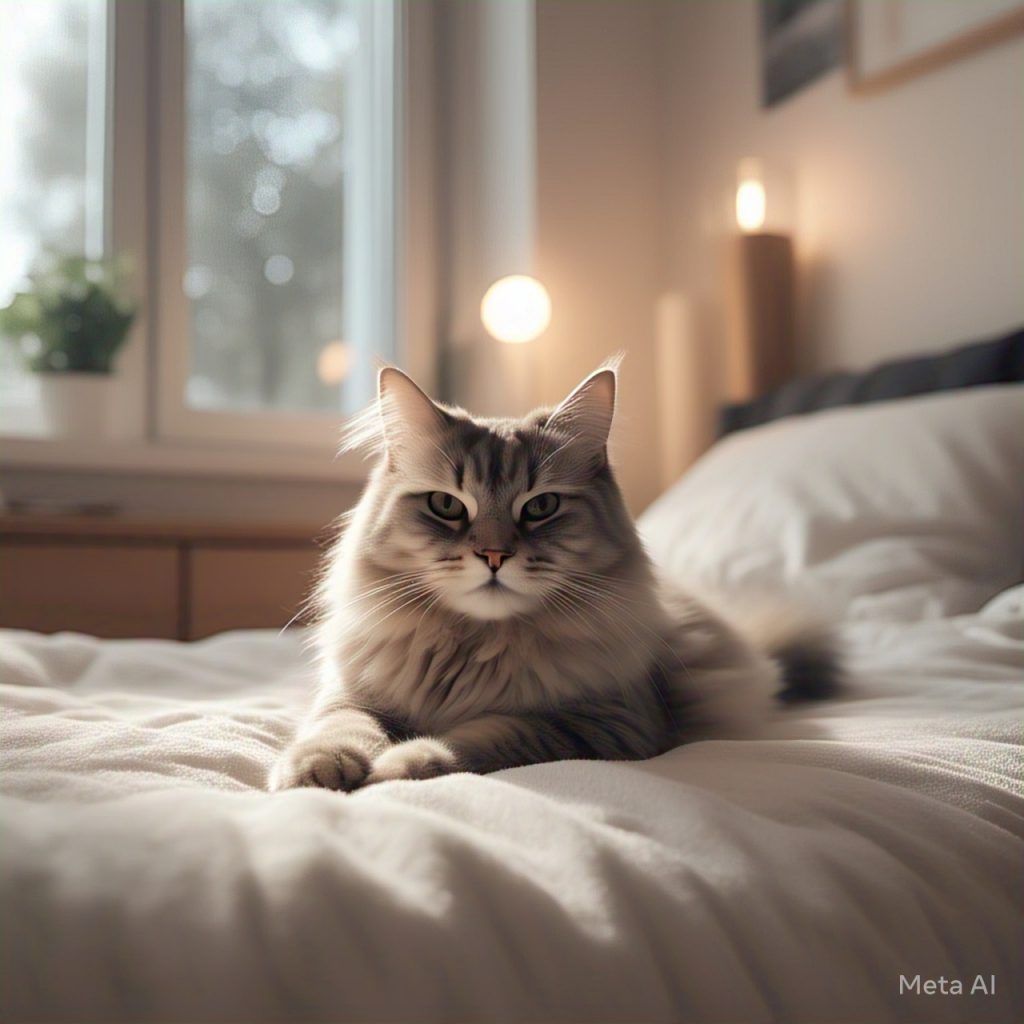Cat pregnancy, also known as queening, is a fascinating journey that lasts approximately 63 to 67 days. During this time, your feline companion undergoes significant physical and behavioral changes. Whether you’re a breeder or a pet owner with an unexpected pregnancy, understanding the different stages of cat pregnancy can help you provide the best care for your pregnant cat.
This guide covers:
- How to tell if your cat is pregnant
- The 5 stages of cat pregnancy
- Week-by-week development
- Care tips for a healthy pregnancy and birth
How to Tell If Your Cat Is Pregnant
Unlike dogs, cats do not show immediate signs of pregnancy. However, within 2-3 weeks after mating, you may notice early symptoms such as:
Signs of Pregnancy in Cats:
✅ Pink & Enlarged Nipples (Pinking Up) – Around the third week, a pregnant cat’s nipples will become more noticeable.
✅ Increased Appetite – She will eat more to nourish the growing kittens.
✅ Weight Gain & Swollen Belly – A visible round belly usually appears by week 4 or 5.
✅ Behavioral Changes – Pregnant cats often become more affectionate, seeking more attention and comfort.
✅ Decreased Activity – Some cats may become less playful and more lethargic.
✅ Morning Sickness – Though rare, some cats may vomit occasionally due to hormonal changes.
If you suspect pregnancy, a veterinarian can confirm it through an ultrasound, X-ray, or palpation (gentle belly examination).
The 5 Stages of Cat Pregnancy
1. Fertilization (Days 1-6)
Once a female cat mates with a male, fertilization occurs in the uterus. Cats are induced ovulators, meaning they release eggs only after mating. This makes pregnancy highly likely if mating occurs multiple times during estrus.
- Eggs are fertilized within 24 hours after mating.
- The embryos travel to the uterus, where they implant.
2. Early Pregnancy (Weeks 1-3)
The first three weeks involve rapid cell division and early development. At this stage:
- The embryos attach to the uterine lining.
- Hormone levels rise, triggering pinking up of the nipples.
- The cat may show increased appetite and mild weight gain.
- Some morning sickness (vomiting) may occur.
3. Mid-Pregnancy (Weeks 4-6)
This is when the pregnancy becomes more noticeable.
- The belly starts to expand, and weight gain becomes evident.
- By week 5, an experienced vet can feel the kittens through gentle palpation.
- The cat’s appetite increases significantly.
- Behavioral changes include nesting behavior and increased affection.
By the end of week 6, an X-ray can confirm the number of kittens.
4. Late Pregnancy (Weeks 7-8)
At this stage, the kittens grow rapidly, and the cat prepares for labor.
- The belly becomes very large and round.
- Kitten movement is visible, especially near the abdomen.
- The cat’s appetite peaks but may decrease before labor.
- Nesting behavior increases—your cat may look for a quiet, safe place to give birth.
- The cat may groom excessively, especially around the belly.
5. Pre-Labor & Birth (Week 9 – Day 63-67)
A few days before labor, signs of impending birth appear:
- The cat stops eating 12-24 hours before giving birth.
- Restlessness, pacing, and vocalization increase.
- Temperature drops slightly (normal is 100-102.5°F, but it may drop below 100°F).
- She may hide in her nesting area and start kneading or purring.
Week-by-Week Cat Pregnancy Breakdown
| Week | Development | Signs in the Cat |
|---|---|---|
| Week 1-2 | Fertilization & embryo development | No visible signs |
| Week 3 | Embryo implantation | “Pinking up” of nipples, increased appetite |
| Week 4-5 | Growth of fetuses, organs form | Noticeable belly expansion, affectionate behavior |
| Week 6-7 | Kittens grow rapidly | Visible movement in the belly, nesting behavior |
| Week 8-9 | Final growth, preparation for labor | Restlessness, appetite changes, seeking a nesting spot |
How to Care for a Pregnant Cat
Nutrition & Diet
✅ Switch to high-quality kitten food – Pregnant cats need more calories and nutrients.
✅ Offer small, frequent meals – This helps accommodate the growing kittens.
✅ Provide plenty of water – Hydration is essential.
✅ Consider vitamin supplements – But only with veterinary approval.
Nesting Area Preparation
✅ Create a quiet, comfortable space away from household noise.
✅ Use a large box lined with soft blankets or towels.
✅ Keep the area warm and private.
Veterinary Care
✅ Ultrasound (from 16 days) – Confirms pregnancy.
✅ X-ray (after 45 days) – Determines the number of kittens.
✅ Regular vet checkups – Ensure a healthy pregnancy.
What to Expect During Labor & Birth
Once labor begins, the cat will experience three stages:
Stage 1: Pre-Labor (Up to 24 hours)
- Restlessness, purring, pacing
- Panting, licking genital area
- Occasional contractions
Stage 2: Active Labor (30-60 minutes per kitten)
- Strong contractions
- Kitten birth (every 10-60 minutes)
- Mother licks and cleans kittens
Stage 3: Placenta Delivery (5-15 minutes after each kitten)
- The mother eats the placenta (normal behavior)
- Kittens begin nursing immediately
Signs of Trouble During Pregnancy or Labor
🚨 Call a vet if you notice:
❌ Excessive vomiting or refusal to eat
❌ Vaginal bleeding or foul-smelling discharge
❌ Straining for more than an hour without delivering a kitten
❌ A kitten stuck in the birth canal
❌ Lethargy or signs of distress in the mother
Final Thoughts
Cat pregnancy is a short but exciting journey. By understanding the stages of feline pregnancy, you can provide proper care and ensure a safe delivery. Whether you plan to keep the kittens or find them loving homes, responsible pet ownership is key—consider spaying your cat after birth to prevent future unplanned litters.
Would you like a guide on caring for newborn kittens? Let me know!

